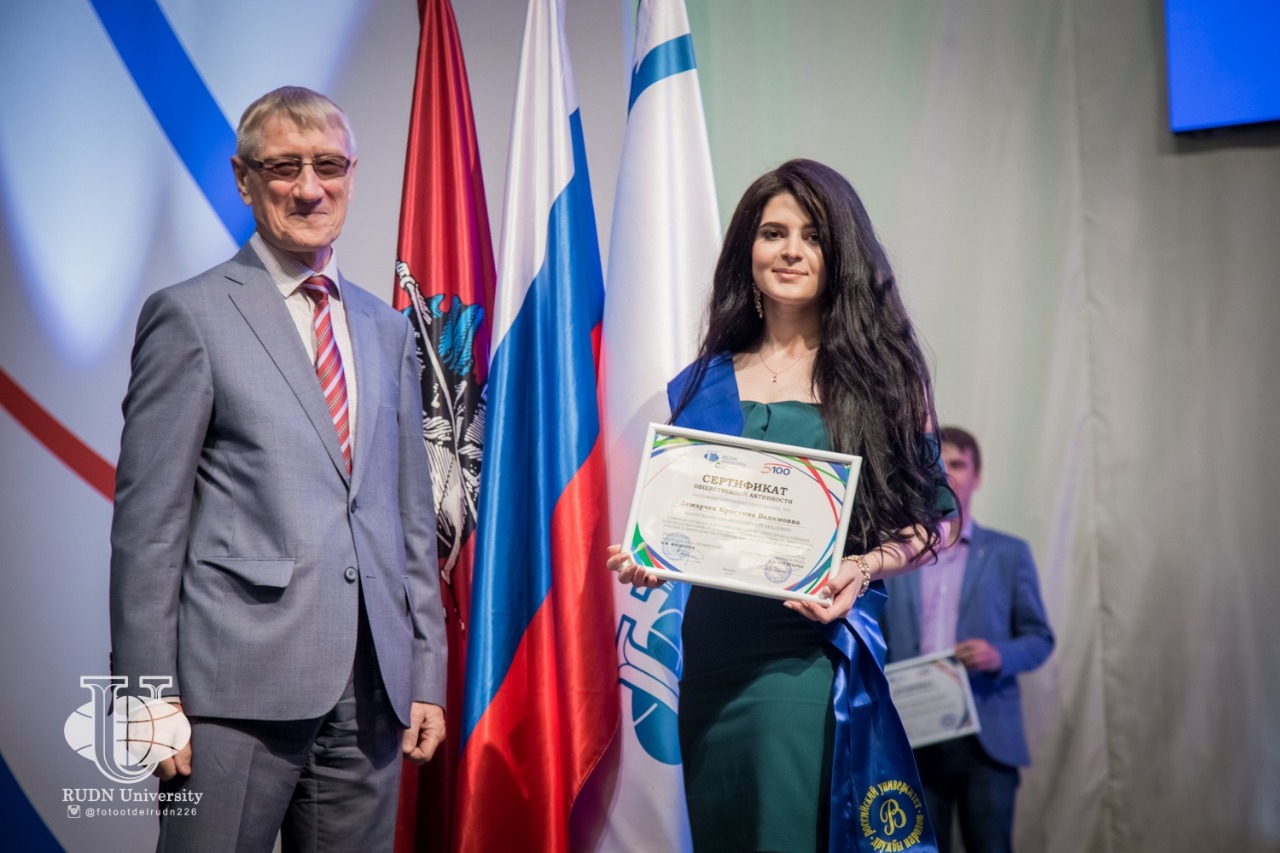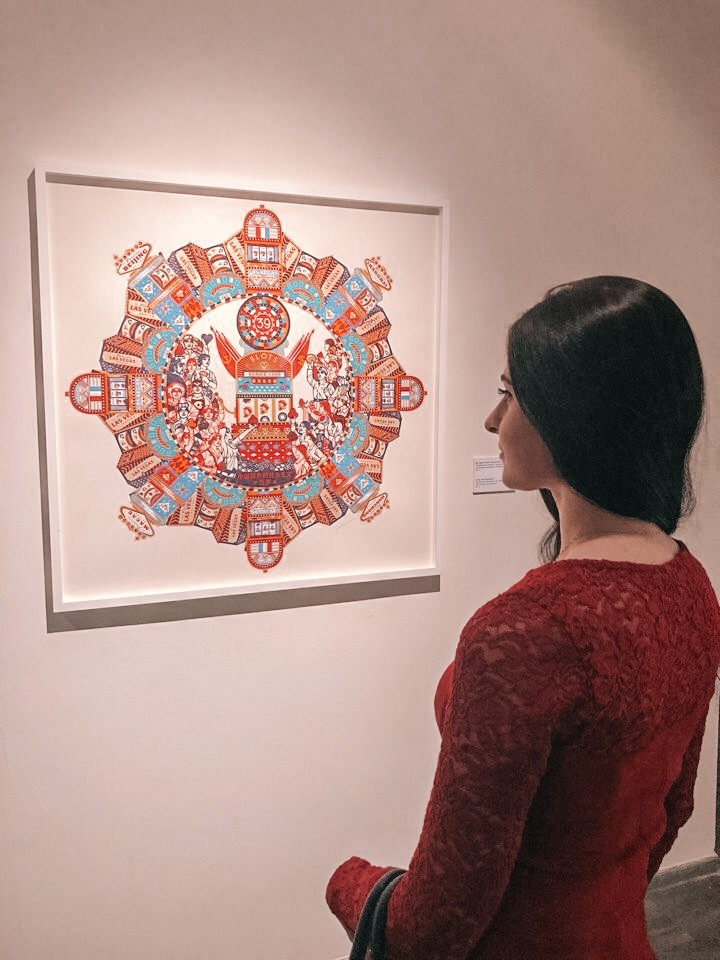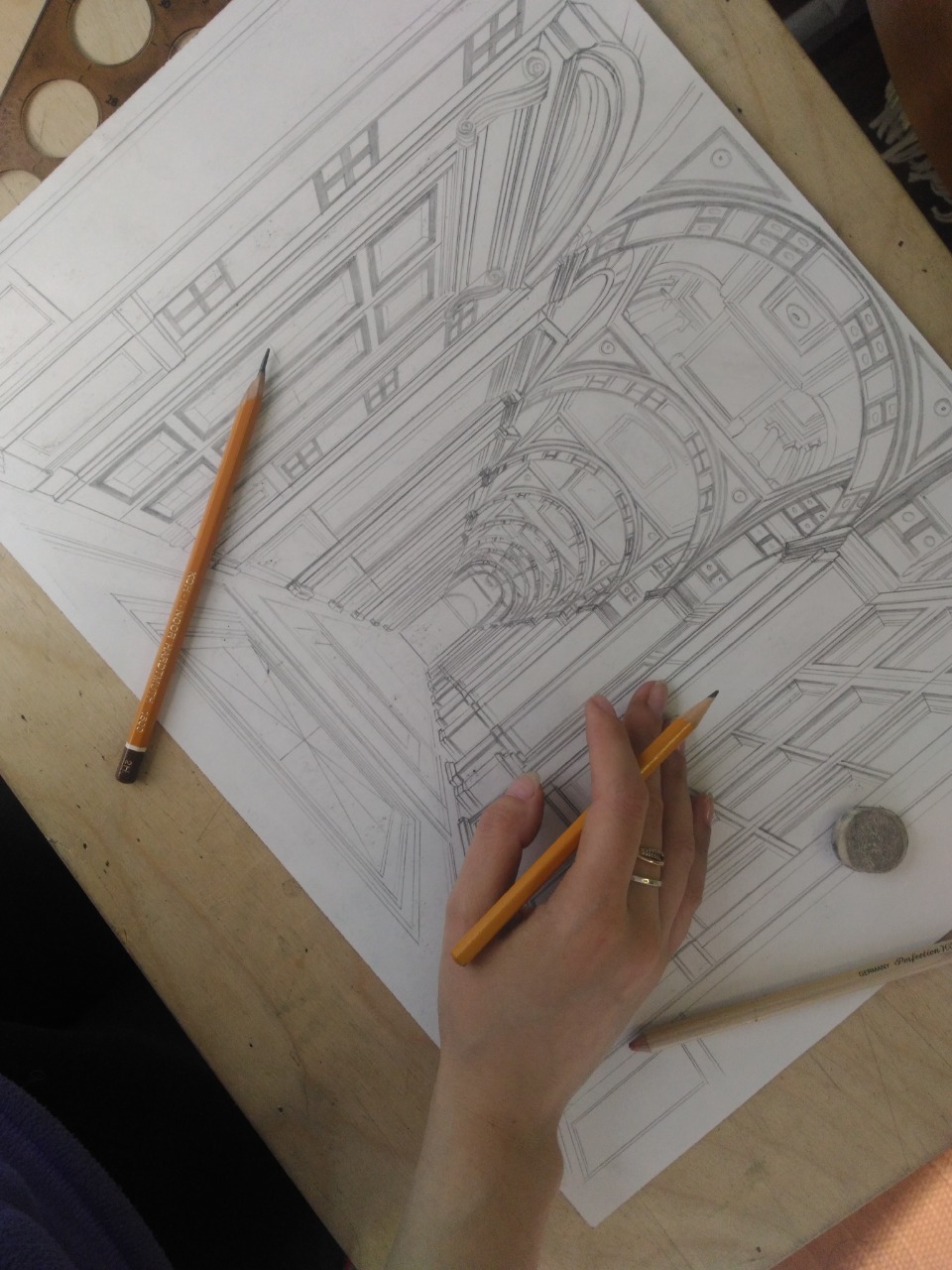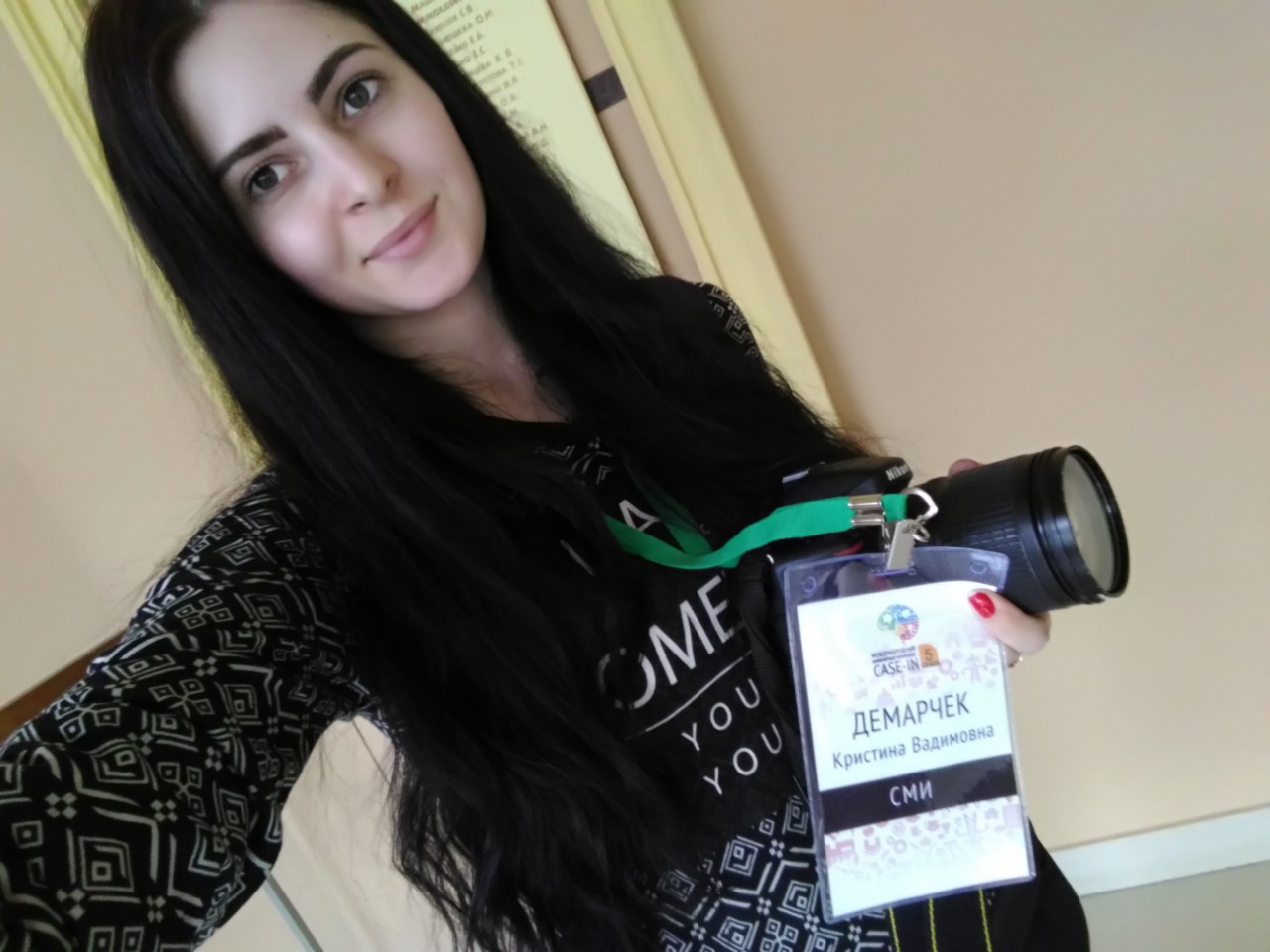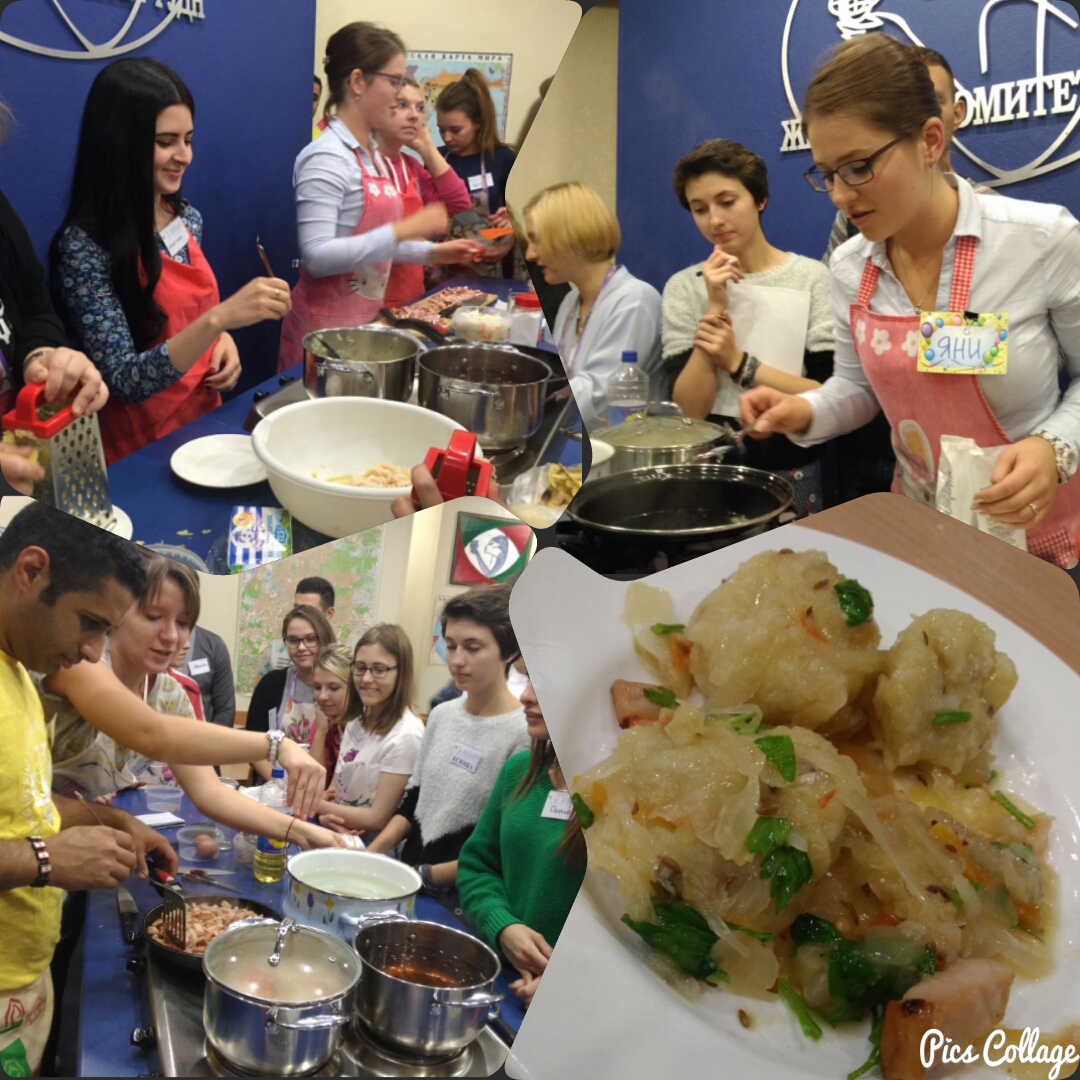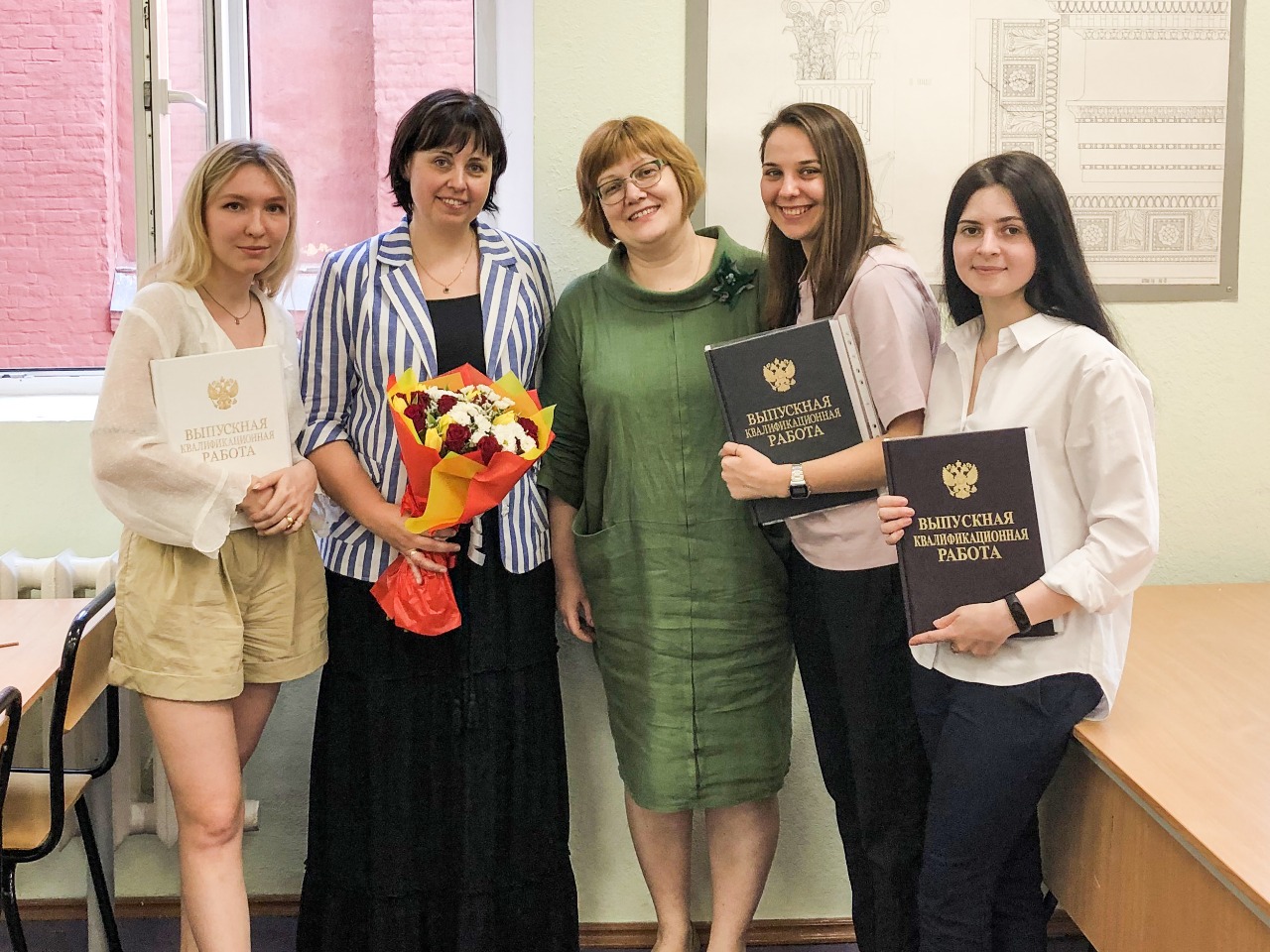“Do not confuse relaxation with laziness,” says Kristina Demarchek, RUDN University student
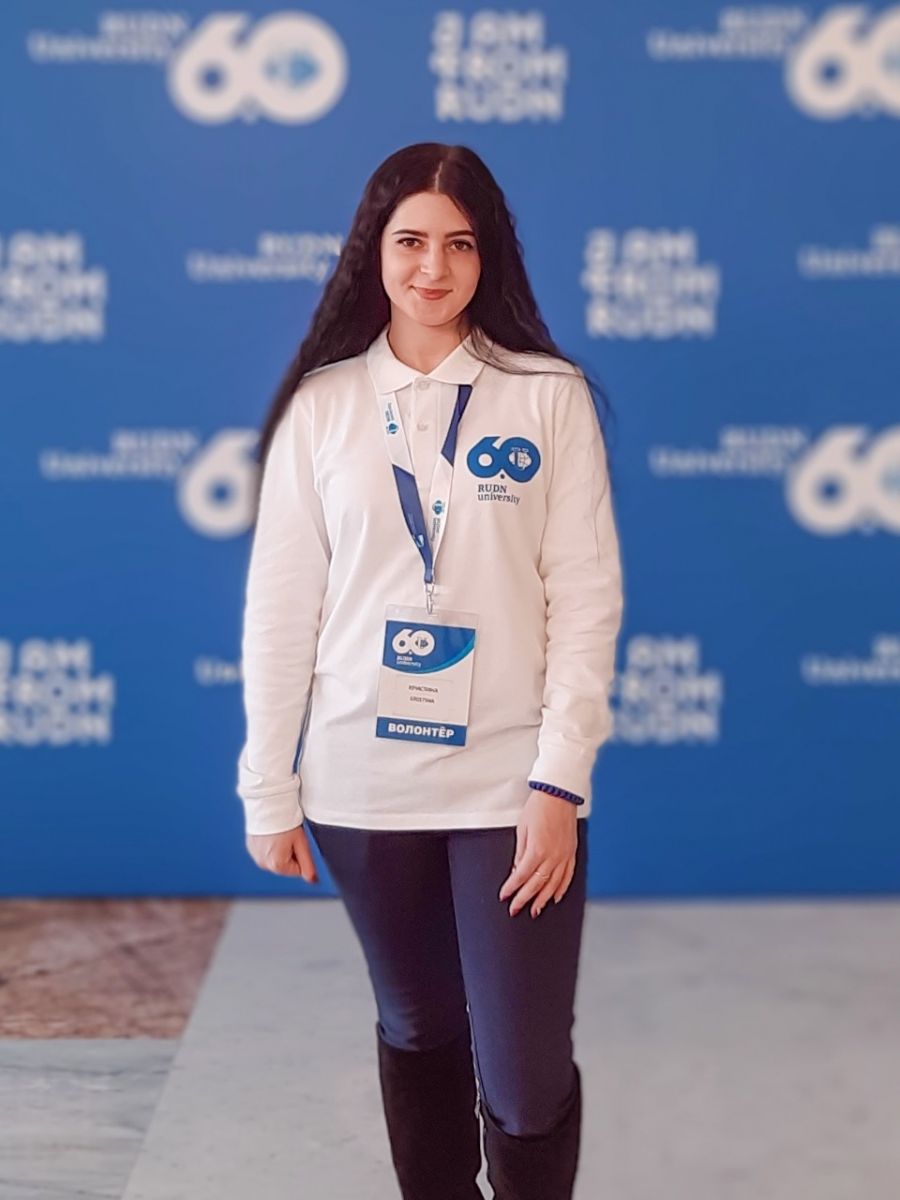
Why did you choose “Architecture” at RUDN University?
RUDN University won me over with its atmosphere and friendly attitude in the admission committee of the Engineering Academy. I have always admired the architecture of the Gothic and Classicism, the thoughtfulness and sophistication of the building elements. After school, I first applied for “Architecture”, but at the last moment I went to “Design of the architectural environment”. In the bachelor’s degree, I became more independent, found mentors, including wonderful teachers Larisa Savelyeva and Natalia Kalinina, to whom I am infinitely grateful. I was the head of the group and a volunteer, a member of the student committee of the Engineering Academy, participated in conferences and professional competitions and received Stanis stipend. Student time will forever remain a fond memory. I learned a lot of life lessons and in my graduate school I consciously went back to my original goal — to become an architect.
Do you consider your specialty more creative or technical?
It is creative, but with a lot of technical subtleties. It is not enough draw a “beautiful” building — you need to take into account the geographical location, climatic conditions, site features, insolation, the logic of movement of people in the building and escape routes. One thing is impossible without the other in architecture. At the same time, “being an architect” does not always mean exclusively the work of a draftsman doing routine things, because you can be an architect-critic or an architect-researcher. However, even for this you need to go through a real architectural practice, to know the inside. Architecture is a creative process solving a specific problem, you take into account a range of nuances — from who will use the object to what materials the building will be built from.
I like most aspects of the profession of an architect, it balances creative and technical minds. I am thinking about doing postgraduate studies and teaching.
Your project won the Design Perspective 2019 All-Russian Competition for Young Designers. What is special about it?
For this competition we had to create interior design for apartments for rent. Since the tenants will change regularly and may be different in status, age and taste, I had a specific task — to create an interior suitable for everyone. I chose the Scandinavian style, it is versatile and easy to implement. It uses furniture that is simple in shape, natural materials and a muted color scheme that is close to natural shades. I think that I solved the task and space zoning became the key to success. By the way, I am preparing a new interior project for a studio apartment for participation in the Design Perspective 2020 competition.
What buildings do you think are the most difficult to design?
Taking into account the architectural design — medical institutions, they are complex in terms of the technological process. With regard to drafting project documentation — high-rise buildings and buildings on difficult terrain, in extreme climatic conditions and seismological regions. Such objects require strong design solutions.
What helped to adapt in Moscow?
In 2014, I came from Kemerovo. I liked Moscow immediately — its rhythm, architecture of the historical part of the city and atmosphere. Adaptation to the dormitory and the university was difficult, because I was withdrawn and shy. I did not have a single acquaintance here, but I managed to find close people. My roommates and classmates also came from other cities, so we helped each other, went for medical check-ups together, went to trainings and exhibitions. They helped to adapt faster.
How do you deal with burnout?
I had to deal with burnout after almost every session. The most severe exhaustion happened after the defense of the thesis. I had such apathy — I had been working on the project to the point of wear and tear. It took 3 months to recover. Therefore, my advice is: let yourself rest, health is most important. But don’t confuse relaxation with laziness.
How did you start participating in scientific conferences?
I was inspired by Salem Halabi, teacher of structural mechanics. My first article was on the professional contributions of women architects. After that I wrote 11 articles on design and architecture. I advise students who plan to write articles to start as early as possible. The sooner you start, the more time you will have to learn. You will have several publications before your master’s degree — it will definitely be easier. Talk with the teacher, choose a topic that interests you, study what is happening around in a professional circle, and then pack all your thoughts on the topic into an article.
What stereotypes about architecture did you have to fight?
Probably the most common stereotype in the architectural world is that a woman cannot be a successful architect. I prefer not to fight it. If you set a goal and systematically work to achieve it, then everything is more than real. My family and friends, fortunately, have always supported my choice of profession.
Describe an architect through skills
As for “hard skills”, the architect must confidently master the graphic programs ArchiCAD, Revit, Adobe Photoshop and InDesign. Creation of project concepts, drawing and subsequent design of graphic materials are routine and time-consuming. Programs save working time. But soft skills are no less important. For example, you should be able to find contact with any person; express thoughts correctly; present yourself or a project; be able to not only listen, but also hear; rationally allocate time; adequately assess your own strength; search, select and analyze information.
What is difficult about being an excellent student?
It’s not difficult, but I can’t call this path easy either, because I always raise the bar and set new goals. Good academic performance is a habit of hard work and correct problem solving.
From early childhood, I lived and studied in the Czech Republic, so I had to work to overcome the language barrier at school. This is when I started to work hard. Good performance requires mental and time expenditures. I spend a lot of time in front of a monitor screen, read professional literature and articles, create projects and carry out theoretical assignments. I am a long distance runner. I am confident that daily work brings results in the long term.
RUDN University staff and alumni received state and departmental awards at the State Kremlin Palace during a festive concert in honor of RUDN 65th anniversary.
An architectural-landscape project by a 5th-year student of RUDN has been shortlisted for the annual International Professional ADD AWARDS 2024 for architects, designers, and developers in the “Urban Environment” category.
RUDN University employees’ work and contribution to the development of the university cannot go unappreciated. The Ministry of Science and Higher Education of Russia recognizes talented university employees and present them with various departmental and state awards.

